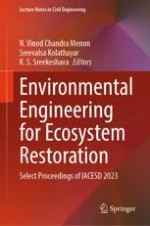2024 | OriginalPaper | Buchkapitel
Feasibility Study on Application of Soft Computing Algorithms for Salinity Intrusion Mapping
verfasst von : Sireesha Mantena, Vazeer Mahammood, Kunjam Nageswara Rao
Erschienen in: Environmental Engineering for Ecosystem Restoration
Verlag: Springer Nature Singapore
Aktivieren Sie unsere intelligente Suche, um passende Fachinhalte oder Patente zu finden.
Wählen Sie Textabschnitte aus um mit Künstlicher Intelligenz passenden Patente zu finden. powered by
Markieren Sie Textabschnitte, um KI-gestützt weitere passende Inhalte zu finden. powered by
